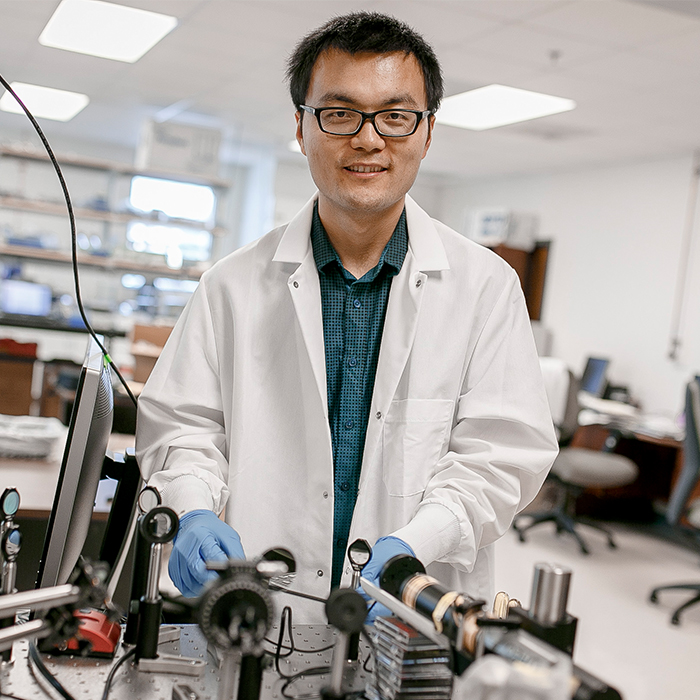 Dr. Zhenpeng Qin
Dr. Zhenpeng Qin
More than $4.5 million in new funding from state and federal agencies will support cancer-related research over the next five years at UT Dallas.
Two projects related to brain cancer, each totaling $200,000 over two years, have received High-Impact/High-Risk Research Awards from the Cancer Prevention & Research Institute of Texas (CPRIT). A third CPRIT grant of nearly $3.6 million over five years will be used to establish a new core imaging facility for preclinical research. That award will be combined with $400,000 in matching funds from the University.
The Department of Defense (DOD) also recently awarded the University more than $527,000 for lung cancer research.
“UT Dallas research runs the gamut, from engineering and science to business and social issues,” said Dr. Joseph Pancrazio, vice president for research and professor of bioengineering. “But fundamental cancer research is one of the most important things we do, with the potential to impact so many lives. Ongoing support from CPRIT, the Department of Defense and other agencies ensures we can continue to make significant strides in improving human health.”
Glioblastoma is a common and highly aggressive form of adult brain cancer. With treatment, the median survival is about 14.6 months after diagnosis.
Dr. Lloyd Lumata, assistant professor of physics, will use his $200,000 CPRIT grant to develop a new noninvasive imaging technique that could detect glioblastoma earlier and more accurately. The technique uses hyperpolarization technology to boost by more than 10,000-fold the sensitivity of MRI signals from key biological molecules associated with glioblastoma. In addition to mapping cancer in the brain, the technology could reduce the need for patient exposure to X-rays from CT scans and radioactive imaging tracers, or for removal of brain tissue for diagnosis.
Advancing from a previous CPRIT grant he received in 2016, Dr. Zhenpeng Qin, assistant professor of mechanical engineering, will use his new CPRIT funding for a project aimed at improving the delivery of drugs to brain tumors. A major challenge to treating brain cancer is getting drugs across the blood-brain barrier, which restricts and actively prevents the passage of substances from the bloodstream to the brain. Qin uses nanoparticles that can be triggered with infrared light to perform molecular surgery on key proteins guarding the blood-brain barrier, thus allowing the delivery of anti-cancer drugs that were previously blocked by the barrier.
Dr. Kenneth Hoyt, associate professor of bioengineering, is director of a new small-animal imaging core facility, established by a $3.6 million CPRIT grant. The facility will include several powerful imaging instruments that will be used by cancer researchers to visualize and target tumors in small-animal models of the disease. Such studies allow researchers to test the efficacy of new diagnostic strategies and therapies prior to their use in humans.
In 2017 Dr. Jung-whan “Jay” Kim, assistant professor of biological sciences, published a study that showed one subtype of non-small cell lung cancer — squamous cell carcinoma — is more dependent on sugar to survive than other types of lung cancer. With his $527,000 DOD grant, Kim will investigate whether this cancer’s addiction to sugar can be exploited as a potential new treatment strategy. He will test whether a very-low sugar diet as well as a widely used Type 2 diabetes drug can restrict sugar uptake and utilization to stop the growth of lung squamous cell carcinoma.